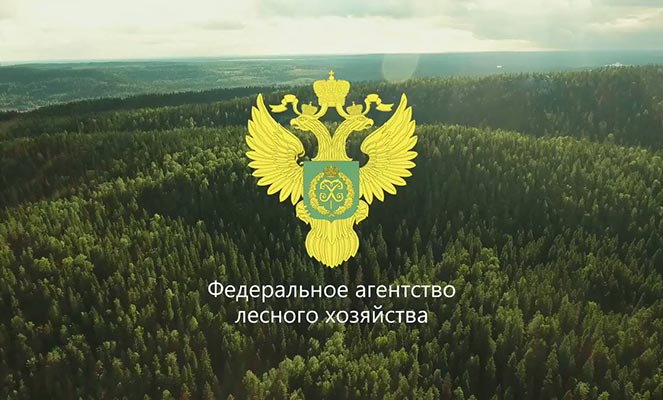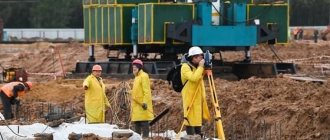Composition and legal status of forest lands
Forest fund lands include the following types of land plots and forests:
- protective territories;
- operational areas;
- reserve territories;
- other land plots intended for forests, which are defined as protective territories;
- forest fund lands;
- other categories of any land that can be used for forestry.
The concept and composition of forest fund lands imply the use of land plots exclusively for their original purpose.
The legal regime of the forest fund is spelled out and clearly indicated not only in land and forestry legislation, but also in other legal acts that prescribe the use of land plots for forests and forest areas.
In particular, this applies to Decree of the Government of the Russian Federation No. 48, which spells out all aspects and features of documents relating to the transfer of land from the forest fund category to any other and vice versa.
The legal regime of the forest land fund implies the use of plots only for forestry activities or for forests. For example, operational forests are those forest land plots that are exploited for this very activity: logging, processing of forest products and other activities.
According to Article 5 of the Forest Code of the Russian Federation, all activities related to forest land plots must be carried out based on the concept of the forest as an entire ecological system that needs protection and safety.
Is it possible to register as a property?
According to general rules, it is impossible to register forest fund lands as ownership. However, individuals and legal entities can apply to change the category of territory and thereby obtain the right to acquire it.
Permission to change the VRI (type of permitted use) is issued at three levels:
- local;
- regional;
- federal
IMPORTANT! The procedure for changing the VRI of a site owned by a forest fund takes a long time. Therefore, in order to use it, they enter into a lease agreement for the object of interest.
Ownership of forest land plots
The use of forest fund lands, according to current legislation, occurs exclusively within the framework of regulations directly related to these same lands. Thus, all forest land plots are either in federal ownership or are provided by federal authorities on the right of ownership to other participants in land relations within the framework of land legislation.
In this case, the following forms of ownership are implied:
- state;
- municipal;
- property of the subjects of the federation.
Forest land reserves cannot be owned by individuals or legal entities, but the latter have the right to use or exploit them on the basis of perpetual or fixed-term use, on lease and easement rights, if this is provided for and permitted by federal authorities. Forest fund lands cannot be used for any other purpose than that provided for by the Forest Code of the Russian Federation.
Cadastral valuation of forest lands occurs on the general basis provided for in Federal Law of the Russian Federation No. 221.
Composition of the ZLF
It is worth mentioning what forest lands are made of. According to the law, the ZLF includes:
- Forest lands are areas covered with dense vegetation classified as forests, as well as other areas if they have restoration value: places of sanitary felling and others.
- Non-forest lands, the intended purpose of which is forestry, including territories occupied by economic facilities and roads.
Considering that forest vegetation can be located outside the ZLF, the forest fund does not include forests located in areas intended for:
- defense;
- construction of urban settlements;
- farming and so on.
Their legal regime is determined in accordance with the intended purpose of the lands on which they are located.
Forestry legislation classifies as ZLF all lands that are located within forest districts and forest parks on the territory of the Russian Federation. All such areas are recognized as forest areas.
All forest areas from the forest fund lands are exclusively federal property. These include:
- trees, shrubs and other vegetation in forest parks and forest areas;
- sanitary clearings and burnt areas not occupied by dense vegetation;
- open spaces and clearings;
- clearings and swamps in forestry areas;
- roads, outbuildings and other objects.
If a land plot is included within the boundaries of the timber industry enterprise, this does not always mean that it can be classified as forest land. Such territories used to be often included in the lands of settlements, which can be confirmed by a cadastral extract, even if its boundaries were not precisely established.
Transfer of plots from forest category
The transfer of forest fund lands to any other target category is carried out exclusively within the framework of Decree of the Government of the Russian Federation No. 48, which sets out the procedure for preparing documentation. The complete package of such documentation includes the following documents:
- petition;
- act and plan of the selected land plot, indicating its cadastral value and geographical location;
- decision from an authorized authority;
- a certificate stating that there are no mineral deposits on the selected forest plot of land;
- extract from the Unified State Register for a specific forest area;
- a project on transferring land to another category, approved by the Government of the Russian Federation;
- results of the examination, if any.
In total, after transferring the package of approved documents to the authorized body, three weeks must pass (meaning including weekends), after which the applicant is sent a response with the approval of the application or refusal of it.
Confiscation of forest fund lands for carrying out any activity and using these lands for purposes not provided for in the Forestry Code of Russia is possible only after transferring the land plots to another category. Otherwise, violators will face administrative liability for land violations and crimes.
Legislative regulation of the use of agricultural products
It is impossible to overestimate the importance of the forest fund as an ecosystem and natural resource for the Russian Federation, at least if we take into account its scale. According to the latest estimates, the area of forest land in Russia is at least 1.146 billion hectares - over 60% of the entire territory of the country.
It is not surprising that such a resource requires special regulatory regulation. In this regard, the operation of ZLF is regulated by the provisions of two regulations:
- The Land Code of the Russian Federation defines the principles of use and protection of especially valuable territories, provides a general description of forest lands, describes the rules for allocating plots, their transition from one category to another, etc.
- The LC RF defines:
- the legal status of lands occupied by forest vegetation, the regime of use and protection of forested areas, protection, reproduction of forests as a natural resource;
- conditions for their provision to citizens and organizations for use;
- those who manage forest lands, and so on.
Please note that the norms of the LC are applied insofar as the relations that have arisen in the field of forests have not yet been regulated by the norms of the LC.
Implementation of tourism and recreation activities for citizens
The intended purpose of forest fund lands implies the use of land plots to carry out activities to organize tourism, recreation and cultural and sports events for citizens. In the described case, transfer of land plots from one category to another is not required. This is stated in Article 41 of the Forest Code of the Russian Federation.
According to paragraph 2 of Article 41 of the LC RF, on forest land plots it is possible to construct or erect buildings and structures of a temporary nature, their improvement and use for recreational purposes.
In this case, for the period of use of the land plot, either a lease agreement or an agreement for fixed-term/indefinite use is drawn up. Both an individual entrepreneur and a legal entity can act as one of the parties to such an agreement.
Individuals are not granted this right, since they cannot carry out recreational activities, but only be a participant (not an organizer).
Types of permitted use
All territories included in the fund are the property of the state or constituent entities of the Russian Federation. However, the current legal regime does not prohibit citizens from using them. Collecting berries and mushrooms is allowed, and in some regions, hunting wild animals and collecting dead wood.
Individuals can lease forest land. At the same time, they are obliged to comply with the terms of the temporary possession agreement. Tenants must:
- rational, continuous use of the rented property;
- ensure the safety of the site, monitor the ecology of the environment;
- comply with the rules and regulations of forest management;
- maintain biological diversity;
- preserve and protect natural and cultural heritage sites located on the leased area.
The Forest Code regulates the following types of use of fund areas (resources):
- timber harvesting;
- oil for the New Year;
- wood products (bark, birch bark, leaves);
- haymaking;
- creation of apiaries;
- grazing;
- arrangement of various activities that do not contradict current laws.
IMPORTANT! Tenants of state zones are allowed, by agreement, to build auxiliary buildings and structures on the premises.
Protection of forest lands. Responsibility for forest violations
Responsibility for forest violations is provided for in Chapter 13 of the Forest Code of the Russian Federation. According to this chapter, there are three types of liability:
- administrative;
- criminal;
- seizure of forest products obtained as a result of the violation;
- compensation for damage.
Administrative/criminal liability arises and is implemented in compliance with all norms of the Code of Administrative Offenses and the Criminal Code of the Russian Federation. Moreover, according to Article 99 of the Forestry Code of Russia, the punishment incurred cannot exempt the offender from compensation for damage.
Thus, if the actions of a citizen caused a fire and burnout of a significant part of the forest, then he will bear not only criminal or administrative liability (depending on the circumstances of the case), but will also be obliged to compensate (for example, through forced labor) the damage he caused to forest land.
The seizure of forest products and tools that contributed to their extraction, harvested as a result of violations, is carried out within the framework of Article 99.1 of the Forest Code of the Russian Federation. All wood, transport and means for wood extraction are confiscated (confiscated) free of charge in favor of the state.
At the same time, no one exempts violators from forced compensation for damage that their actions caused to forest land plots. For example, if, during illegal deforestation, an organization was punished not only with confiscation, but also criminally, the representative of the organization (manager) will be obliged to compensate for the damage either in monetary terms or in kind (by, for example, planting trees that his organization destroyed).
Author of the article
ZLF Management
Since the forest fund and the lands under it are predominantly owned by the state, it is the federal authorities who are entrusted with the management of the forestry forest. If the plots belong to a region or municipality, they are managed by regional or municipal authorities.
In Art. 83 LC mentions some features of forest land management, for example, the right of government bodies to transfer their functions in the field of forest relations to regional institutions.
State management of the forest fund and its lands is entrusted to. It implements these tasks through the Federal Forestry Agency (Rosleskhoz).

According to the official forest fund of the Russian Federation, the powers of Rosleskhoz include:
- forest planning;
- use, conservation and protection of forests;
- reproduction and state forest inventory;
- forestry supervision and control over the execution of delegated powers;
- consideration of complaints about territorial planning materials, and so on.
Rosleskhoz implements its tasks through territorial bodies. So, if someone needs a certificate of the availability of forest fund lands or a citizen wants to obtain such a plot for use, they should contact.






